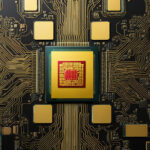The United States has taken a significant step in regulating its technological exports by announcing new controls targeting advanced technologies, particularly quantum computing and GAAFET chip technology. This move aligns with similar restrictions being implemented by international partners and marks a crucial shift towards tighter oversight regarding the dissemination of cutting-edge technological infrastructure.
One of the standout features of this new regulatory framework is its specific focus on quantum computing equipment. Quantum technology is rapidly advancing, and for the United States, this represents not just a matter of economic competitiveness but also national security. The updated controls include intricate reporting requirements for foreign nationals engaged in quantum computer development on U.S. soil. This particular stipulation arises from mounting concerns regarding foreign influences and the potential for technological espionage.
Commerce official Alan Estevez emphasized during the announcement that the new controls are designed to keep pace with technological advancements and enhance the overall effectiveness of export regulations. By instituting these measures, the U.S. aims to safeguard its technological leadership in the global landscape. The approach also seeks better cooperation with allied nations, making sure that the measures taken resonate across borders.
However, industry experts have voiced concerns about the ramifications these new controls may have on the workforce in sectors reliant on quantum technology. Trade lawyer Kevin Wolf remarked on the potential negative impacts these export controls might impose on hiring practices in the quantum sector. The stringent restrictions risks discouraging small companies from attracting the necessary talent from abroad, which is pivotal for innovation and growth within this rapidly evolving industry.
Celia Merzbacher, a representative from the Quantum Economic Development Consortium, articulated the challenges posed by the new reporting requirements. Her insights suggest that the added administrative burden could lead many small firms to limit their workforce to only domestic hires, subsequently narrowing their pool of potential skilled professionals and stifling innovation.
This regulatory framework is not limited to quantum technologies alone. The updated measures also extend to advanced semiconductor production and additive manufacturing technologies. GAAFET, which refers to Gate-All-Around FET technology, represents a significant leap forward in chip-making techniques. While previous regulations focused more on design aspects, the new rules prioritize the production and material handling processes as well.
The broader implications of these controls extend into geopolitical landscapes, emphasizing how nations are navigating their technological strategies. As countries engage in competitive maneuvers within advanced technology sectors, it has become increasingly clear that managing supply chain risks and talent acquisition are of paramount importance.
In conclusion, the U.S. government’s introduction of new export controls on advanced tech, especially in the realm of quantum computing and semiconductor technologies, highlights an urgent need for vigilance as the competitive landscape of technology evolves. As companies adapt to these new realities, they must find ways to balance compliance with fostering innovation and growth. The path forward for businesses in these sectors may require them to rethink hiring strategies, operational workflows, and international collaborations to ensure they remain at the forefront of technological development.












